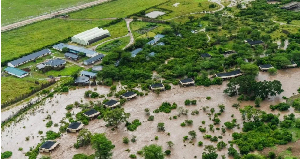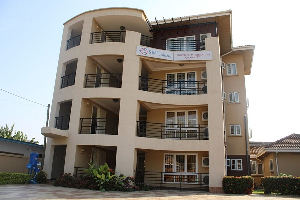Regional News of Tuesday, 31 August 2010
Source: GNA
EPA directs Iduapriem to include marginalised communities
Samahu Pepesa (W/R), Aug. 31, GNA - Mr. Ransford Sekyi, Head of Mining of the Environmental Protection Agency (EPA) has directed the management of Anglogold Ashanti Iduapriem Limited (AAIL) to include Owusukrom, Wangarakrom, Egyansiakrom, Yaayakrom and Badukrom in its Ajopa Project Environmental Impact Assessment (EIS) study.
He said this at a public hearing organised by the EPA at Samahu Pepesa in the Prestea Huni Valley District over the weekend.
Mr Sekyi said all communities should be treated fairly and all communities that are likely to suffer any form of environmental impact, relocation or otherwise should be clearly spelt out and the remedial actions indicated.
This would enable the communities and other stakeholders to hold the company accountable if it failed to honour its environmental pledges.
He said another EIS would be held to ensure that the marginalised communities are included in the EIS before a permit was granted for work to begin on the Ajopa Project.
The Ajopa Project covers an approximate area of 48 square kilometres and only 25 percent would be mined within the two-year duration of the project.
Mr Steve Adjei, the Compensation and Resettlement Manager of AAIL, said a compensation committee had been formed with all leaders of the eight communities in the catchments area of the company as members.
He said 739 individuals are to be paid compensation of 2,679.000 Ghana cedis while crop and structure compensation would also be paid.
Mr Adjei said though assessments for the crops were done, they would be reviewed to reflect current changes adding that 375 households would be resettled at a designated area that the affected communities would indicate.
He said a resettlement action plan had been made and the exact location would be decided after meetings had been concluded with beneficiaries.
Mr Adjei said Tokonaso, Owusukrom and Alaalaa are likely to be relocated to a new site to minimise the impact of the mines on them.
Mr Kwamena Yorke, the Social, Community Development Manager of AAIL, said the provision of water, health, sanitation, education and scholarship opportunities would be made available to children from the catchments communities.
He assured the communities that all those who were ignored would be included in an updated EIS document to prevent any tension between the mine and the communities.
Mr Billy Mawasha, the Managing Director of AAIL, said the concerns of the communities would be critically assessed in line with the companies existing corporate social responsibility programme to ensure that appropriate actions are taken for the mutual benefit of the communities and the company.
He said though the communities were requesting for more water sources close to their farms to prevent them from using and drinking from streams and rivers in their farms that could be polluted.
Mr Daniel O. Kwarteng, an opinion leader from Huniso, said the community engagement by AAIL was good and had reduced tension between the company and the communities.
He appealed to the EPA to grant the permit quickly to enable the company to begin its work to enable communities to have their compensation and relocation as early as possible.
Mr Kwarteng expressed regret at the low level of education among the youths of the area and appealed to the company to recruit the youth from the area, train them and make them employable in the mine and other sectors of society.
He said lack of electricity in Samahu Pepesa, Tokonasu, and Huniso among others would not put the communities in a state of readiness for the other jobs that were likely to be created when the mine becomes operational and appealed to the company to liaise with other stakeholders and connect them to the national electricity grid.
He said large tracts of land would also be made available for plantation farming that could create employment opportunities for many of the farmers alongside the mine.
"These plantations could employ a great number of the youth, create opportunities for skills acquisition in modern agricultural practices and also serve as a training centre for more youths," Mr Kwarteng said.










